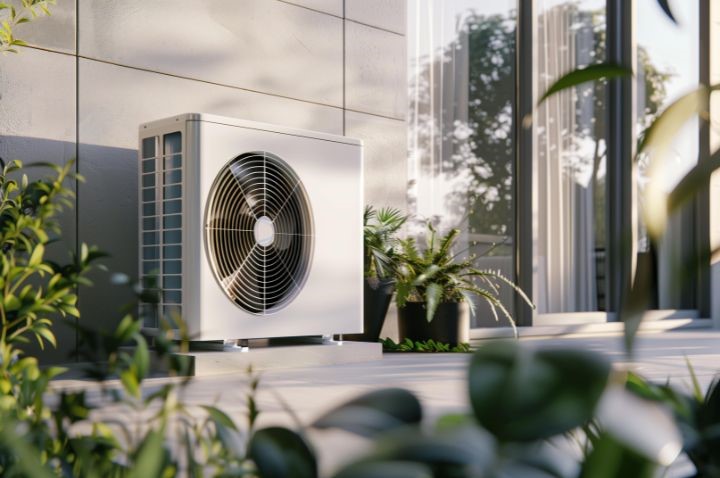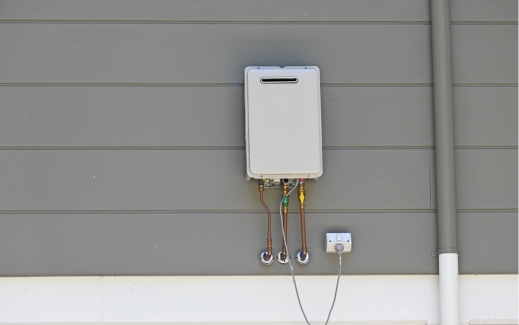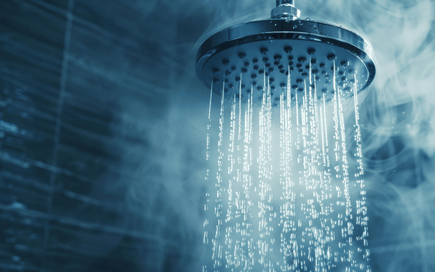
Favourites
Sign in to your account
By adding to Favourites, you can…
- Save products or resource documents you view regularly
- Save time with quick access to frequently viewed items
Please sign in or create an account to add to your Favourites.
Articles
July 1, 2025
Hot Water, Power, and Project Design: A Q&A with an Electrical Engineer
As more projects move toward electric hot water systems, questions around power allocation, design constraints, and cost are front-of-mind. In a recent technical chat, Bromic’s Hot Water Specification Manager, Luke Florido, sat down with a consulting electrical engineer to tackle these topics head-on.
Here’s a breakdown of that conversation.
Who determines the type of hot water system for a project?
Typically, the hydraulic consultant proposes the system for the project, and the electrical engineer assesses whether there’s enough power. If there isn’t, electric instantaneous hot water often gets ruled out early, sometimes unfairly.
“If there’s no power, it goes straight off the table,” the engineer said. “It’s not even considered. But that doesn’t mean the other options won’t need the same upgrades.”
To avoid these solutions being dismissed early:
- Engage with electrical engineers to assess power availability during concept design.
- Reference compact, energy-efficient systems like Bromic’s 3 Phase Instantaneous Electric Water Heaters.
How do electrical supply limitations impact the hot water system, and what are the typical upgrade requirements?
You may need to upgrade to a new dome or install a transformer, particularly in dense urban environments.
Supply limitations (dome/transformer triggers)
In WA (Western Power), standard dome capacity is up to ~250 A per connection. Exceeding this typically requires installing a transformer or negotiating a supply upgrade, managed under the Distribution Low Voltage Connection Scheme (DLVCS).
In QLD (Energex/Ergon), NSW (Ausgrid/Endeavour Energy), VIC (Powercor/CitiPower), and elsewhere, electrical distributors follow AER-based connection charge frameworks. They evaluate bespoke network augmentation needs case by case.
Cost implications
In WA, one recent guide indicates transformer upgrades are charged based on $496 per kVA + 13.9% capital contribution tax. Western Power also charges $570 – 800 for converting single-phase to standard three-phase in metro areas.
For residential/commercial in other states, costs are quoted individually, typically in the $3,000–10,000 range for a three‑phase upgrade, depending on location and infrastructure needs.
What’s the difference between three-phase and single-phase design when it comes to hot water?
Three-phase designs distribute electrical load evenly across all phases, which makes them more predictable and stable. Single-phase systems tend to overload a single circuit, making electrical balancing across an apartment complex difficult and labour-intensive.
“Three-phase is evenly distributed, just like filling three buckets evenly instead of overloading one,” the engineer said.
Are electric hot water systems really the Power Load issue – or is it everything else?
It’s everything. Between induction cooktops, A/C systems, and EV charging, even non-HW loads are pushing the limits.
“It’s not just the hot water. You’ve got massive cooktops at 40–60 amps and people charging cars overnight.”
Is every apartment building three-phase?
Yes. Residential homes might be single-phase, but any apartment building or commercial project will run on three-phase power.
Q: What are the key design challenges when specifying electric hot water in modern buildings?
The biggest challenge is balancing demand without exceeding thresholds that trigger expensive infrastructure upgrades. For example:
- Apartment buildings are usually 3-phase, but designers must carefully allocate loads across phases
- High-demand facilities (like aged care) require full AS/NZS 3000 compliance, meaning 100% allocation for the first unit and 50% for each subsequent unit, even if real-world use is lower
The trick is smart diversification and accurate demand forecasting, supported by feasibility.
What about aged care facilities, do they complicate the equation?
Definitely. Standards require 100% demand allowance for the first unit and 50% for each additional one – which can push you into needing a transformer fast.
“In aged care, the actual hot water use might be low due to staff limitations, but you still have to allow for the peak load,” the engineer said.
What about EV charging? Is that impacting hot water system design?
Yes. All new developments must now be “EV ready” under the National Construction Code (NCC). Power availability is tight, so EV charging is managed by smart systems that allocate power during off-peak times.
“At 3am, you’re only using 30 amps. So, the system allocates 220 amps to EV charging. At 7am, it drops to 10.”
What’s the cost impact of upgrading to 3-phase in apartments?
It depends on existing infrastructure but expect some minor increase in cable and breaker costs.
“It might cost more, but because the load is distributed across three phases, you may need less capacity per phase. Sometimes the difference is negligible.”
Conclusion: Why This Matters
Designing with 3-phase electric instantaneous water heaters (like those in Bromic’s range) isn’t just smart for performance and efficiency. It’s also:
- Easier to balance the electrical load
- More compatible with evolving NCC and EV-ready requirements
- Scalable without hitting transformer thresholds prematurely
Have a project in early design? Bromic offers free feasibility studies to ensure your hot water plan fits both the hydraulic spec and the power availability.




